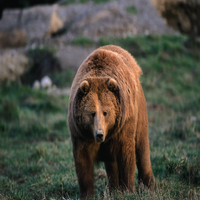Why Aren’t We Furry?

For years now, people have wondered why most humans have very little in the way of fur. I have just read about an interesting idea that I hadn’t seen before. The suggestion is that humans are hairless because Stone-Age mothers regarded furry babies as unattractive.
The article was written by written by Judith Rich Harris, the author of two controversial, but challenging and absorbing books: The Nurture Assumption and No Two Alike. The article is entitled “Parental selection: a third selection process in the evolution of human hairlessness and skin color” and was published in the journal Medical Hypotheses. The article just won the 2006 David Horrobin Prize for medical theory, which has been awarded annually and named in honor of Dr. David Horrobin, who was a renowned researcher, expert in biotechnology and founder of Medical Hypotheses, who died in 2003.
In the paper Rich Harris speculates that in Stone Age societies the mother of a newborn had to decide whether she had the resources to nurture her baby. The newborn’s appearance probably influenced whether the mother kept or abandoned it and therefore an attractive baby was more likely to be kept and reared.
Harris’ theory is that this kind of parental selection may have been an important force in evolution. If Stone Age people believed that hairless babies were more attractive than hairy ones, this could explain why humans are the only apes who don’t have a natural fur coat. She goes on to suggest that Neanderthals must have been furry in order to survive the Ice Age in more Northern Regions than the Cro-Magnons from whom we are descended. Our species would have seen them as “animals” and potential prey. So her final hypothesis is that Neanderthals went extinct because our human ancestors ate them.
It is certainly an interesting idea, but I need a bit more convincing. Humans, like most other mammalian species are hardwired to protect the young at all costs, and it difficult to imagine how many Stone Age Sophie’s Choices would have had to have been made to create a hairless species.
We may learn more from continuing research into the fate of the Neanderthals: did they die out, or, as the psychologist and writer Stan Gooch suggested, did we mate with them? Are modern humans not simply the children of Cro-Magnons, but hybrids of Cro-Magnons and Neanderthals?






